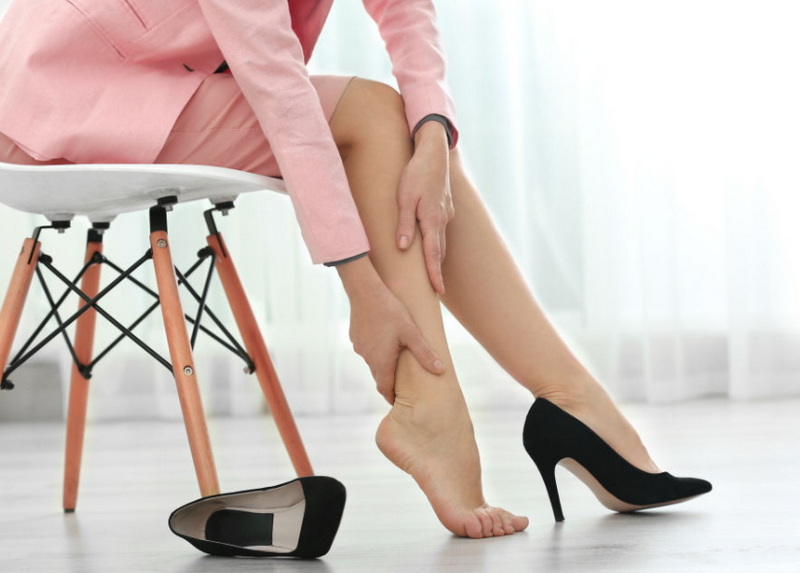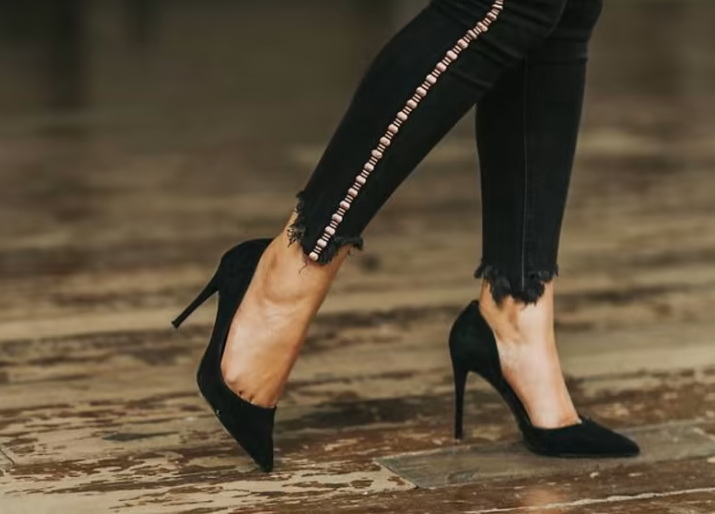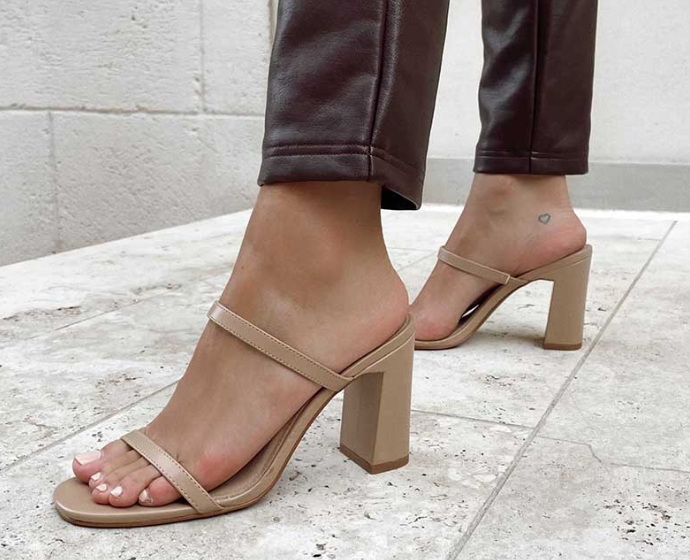Content Menu
● Understanding High Heels
● Choosing the Right Pair
● Mastering the Art of Walking in Heels
● Comfort Tips
● Fashioning Your Look
● Caring for Your Heels
● Psychological Benefits of Wearing Heels
● Common Mistakes When Wearing Heels
● Tips for Wearing Heels All Day
● Conclusion
● FAQ
>> 1. How do I choose the right heel height?
>> 2. What should I do if my heels hurt?
>> 3. How can I improve my balance in heels?
>> 4. Are block heels easier to wear than stilettos?
>> 5. How often should I rotate my shoes?
● Citations:
Wearing high heels can be both an empowering and challenging experience for women. While they can elevate an outfit and enhance posture, they can also cause discomfort if not worn correctly. This comprehensive guide will explore the various aspects of wearing heels, from choosing the right pair to mastering the art of walking in them.

Understanding High Heels
High heels come in various styles and heights, each offering unique aesthetics and comfort levels. It's essential to understand the different types before making a purchase.
- Stilettos: Known for their thin, high heels, stilettos can create a striking silhouette but may be difficult to walk in for extended periods.
- Block Heels: These provide more stability due to their wider base, making them easier to walk in compared to stilettos.
- Wedge Heels: Offering support and comfort, wedges distribute weight evenly across the foot.
- Platform Heels: With a thicker sole at the front, platforms reduce the angle of the foot, making high heels more comfortable.
- Kitten Heels: These are shorter and more manageable, perfect for beginners or those looking for a subtle lift.
Choosing the Right Pair
Selecting the right pair of heels is crucial for comfort and style. Here are some tips to consider:
1. Heel Height: Start with a lower heel (around 2-3 inches) if you are not accustomed to wearing heels. Gradually increase the height as you become more comfortable.
2. Fit: Ensure that your heels fit well. Shoes that are too tight can cause blisters, while those that are too loose may lead to instability. Consider using gel pads or insoles for added comfort.
3. Material: Look for shoes made from breathable materials that allow your feet to stay cool and comfortable.
4. Style: Choose a style that complements your outfit and suits the occasion. For formal events, opt for elegant styles like pointed-toe pumps; for casual outings, consider block or wedge heels.
5. Practice: Before wearing new heels out, practice walking in them at home. This helps you get used to their feel and balance.
6. Try Different Sizes: Sizes can vary between brands and styles. Always try on multiple sizes (your usual size, one size up, and one size down) to find the best fit[1].
Mastering the Art of Walking in Heels
Walking in heels can be daunting, but with practice and technique, it becomes easier. Here are some essential tips:
- Posture: Stand tall with your shoulders back and spine straight. Good posture helps distribute weight evenly and reduces strain on your back.
- Foot Placement: Walk heel-to-toe rather than placing your entire foot down at once. This technique creates a more natural gait.
- Take Small Steps: Shorter strides give you better control and balance while walking in heels.
- Lean Slightly Back: This adjustment helps counteract any tendency to lean forward when wearing high heels.
- Visualize Your Path: Focus on where you want to go rather than looking down at your feet. This helps maintain balance and confidence[2].

Comfort Tips
To make wearing heels more comfortable, consider these strategies:
1. Break Them In: Wear new heels around the house before taking them out for extended periods.
2. Use Cushions: Gel inserts or padded insoles can provide extra cushioning where it's needed most.
3. Stretch Your Feet: Regularly stretch your feet and calves to maintain flexibility and reduce tension.
4. Stay Hydrated: Proper hydration helps prevent foot cramps during long wear.
5. Alternate Footwear: If you know you'll be on your feet all day, bring a pair of flats or comfortable shoes to change into when needed[6].
Fashioning Your Look
High heels can dramatically change an outfit's appearance. Here are some styling tips:
- Pair stilettos with tailored pants or pencil skirts for a sophisticated look.
- Wedge heels work well with sundresses or casual outfits for a laid-back vibe.
- Strappy sandals can add flair to evening wear or summer dresses.
- Match your heel color with your outfit for a cohesive look or choose bold colors for a statement piece[8].
Caring for Your Heels
To extend the life of your high heels:
- Clean them regularly according to the material (leather vs synthetic).
- Store them properly in dust bags or boxes to prevent scuffing.
- Rotate between pairs to avoid excessive wear on one set of shoes[4].
Psychological Benefits of Wearing Heels
Wearing high heels is not just about style; it also offers psychological benefits:
- Boosts Confidence: High heels can significantly enhance a woman's confidence level, making her feel powerful and assertive[3].
- Enhances Self-Esteem: The right pair of shoes can improve self-image and lead to positive interactions with others[3].
- Improves Posture: Wearing heels encourages good posture by engaging core muscles and aligning the spine properly[8].
Common Mistakes When Wearing Heels
To avoid discomfort while wearing high heels, it's essential to steer clear of these common mistakes:
1. Wearing Ill-Fitting Shoes: Shoes that are too tight or too loose can cause significant discomfort and injuries[4].
2. Not Breaking Them In Properly: Always spend time breaking in new shoes before wearing them out for extended periods[6].
3. Ignoring Foot Care: Regularly moisturizing your feet can help prevent cracks and dryness caused by prolonged wear[9].
4. Choosing Too High Heels Too Soon: Gradually increase heel height instead of jumping into very high styles immediately[6][7].
5. Neglecting Foot Health: Be aware of any pain or discomfort; ignoring these signals can lead to long-term issues like plantar fasciitis or other injuries[9][10].
Tips for Wearing Heels All Day
If you plan on wearing heels for an extended period, consider these additional tips:
1. Use Gel Inserts: These provide extra cushioning on pressure points like the balls of your feet[10].
2. Choose Wider Heels or Platforms: They offer better balance and support during long wear[10].
3. Take Breaks Regularly: Give your feet time to rest every hour or so by switching into flats when possible[9].
4. Stay Mindful of Your Surroundings: Be cautious on uneven surfaces; practice walking on different terrains beforehand if you know you'll encounter them during your outing[7][9].
5. Maintain Good Foot Hygiene: Wash and moisturize your feet regularly to keep them healthy while wearing restrictive footwear like high heels[9][10].
Conclusion
Wearing high heels is an art that combines style with technique. By choosing the right pair, practicing walking techniques, and employing comfort strategies, women can confidently wear heels without sacrificing comfort. Remember that every woman's feet are different; what works for one may not work for another, so it's essential to find what suits you best.

FAQ
1. How do I choose the right heel height?
Start with lower heights (2-3 inches) if you're new to heels and gradually increase as you gain confidence.
2. What should I do if my heels hurt?
Consider using gel pads or insoles for cushioning, take breaks when needed, and ensure your shoes fit properly.
3. How can I improve my balance in heels?
Practice walking heel-to-toe, maintain good posture, and take smaller steps to enhance stability.
4. Are block heels easier to wear than stilettos?
Yes, block heels provide more stability due to their wider base, making them generally easier to walk in than stilettos.
5. How often should I rotate my shoes?
It's best to alternate between different pairs of shoes daily to avoid excessive wear on any single pair and give your feet a break from high heels.
Citations:
[1] https://www.lucymary.co.uk/2022/06/beginners-guide-to-wearing-high-heels.html
[2] https://www.youtube.com/watch?v=Vf3KQIvHmSk
[3] https://shoegummi.com/blogs/13-dec-2019/psychological-benefits-of-wearing-high-heels
[4] https://29secrets.com/style/4-common-mistakes-women-make-when-wearing-high-heels/
[5] https://www.stylight.co.uk/Magazine/Fashion/Heel-Trends/
[6] https://seventy7.ae/blogs/news/tips-for-wearing-high-heels-comfortably
[7] https://strivept.ca/how-to-wear-high-heels-without-pain/
[8] https://solebase.co.za/5-reasons-to-love-high-heels/
[9] https://bestlifeonline.com/wearing-heels-in-the-summer/
[10] https://www.jomercer.com.au/blogs/news/heels

















